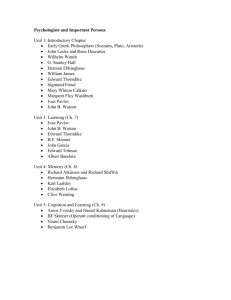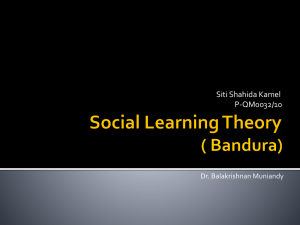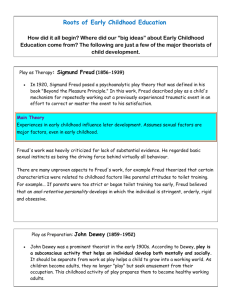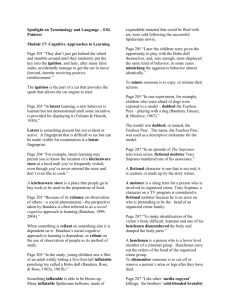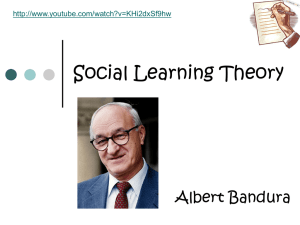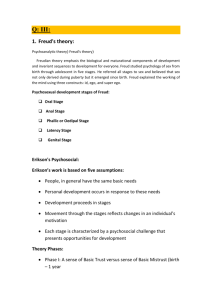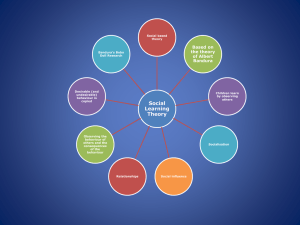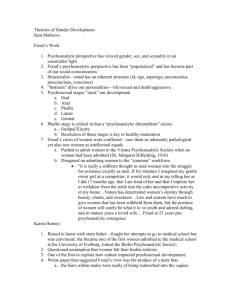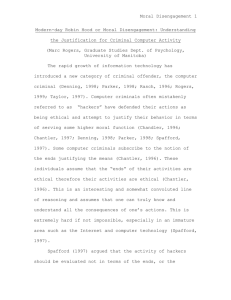Developmental approach
advertisement
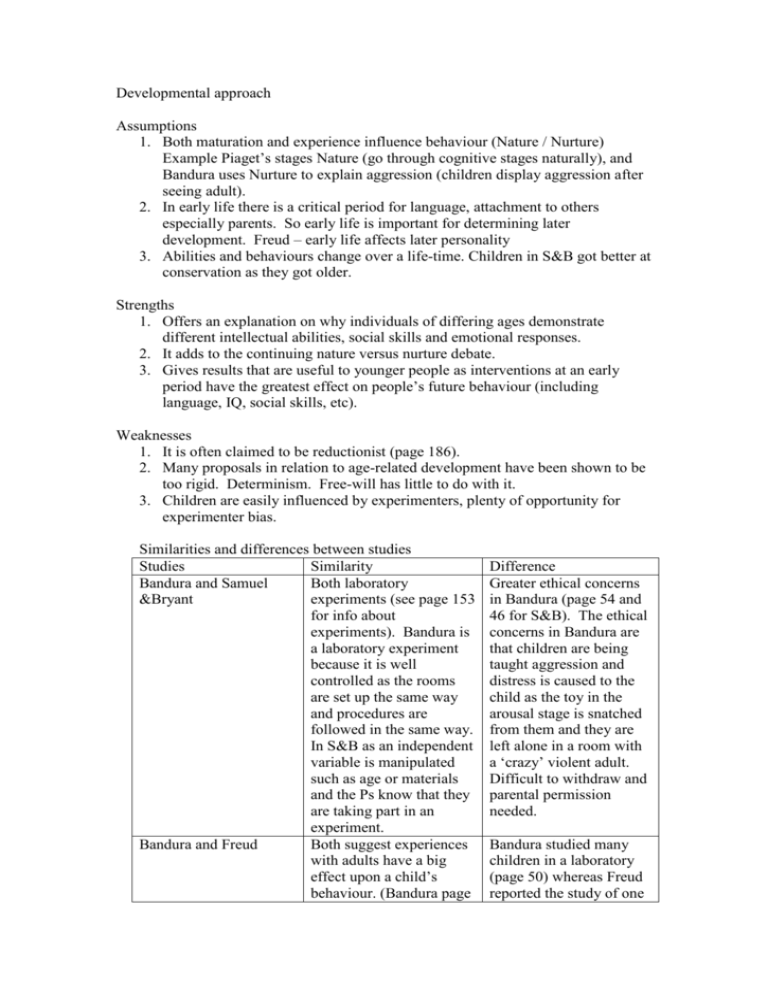
Developmental approach Assumptions 1. Both maturation and experience influence behaviour (Nature / Nurture) Example Piaget’s stages Nature (go through cognitive stages naturally), and Bandura uses Nurture to explain aggression (children display aggression after seeing adult). 2. In early life there is a critical period for language, attachment to others especially parents. So early life is important for determining later development. Freud – early life affects later personality 3. Abilities and behaviours change over a life-time. Children in S&B got better at conservation as they got older. Strengths 1. Offers an explanation on why individuals of differing ages demonstrate different intellectual abilities, social skills and emotional responses. 2. It adds to the continuing nature versus nurture debate. 3. Gives results that are useful to younger people as interventions at an early period have the greatest effect on people’s future behaviour (including language, IQ, social skills, etc). Weaknesses 1. It is often claimed to be reductionist (page 186). 2. Many proposals in relation to age-related development have been shown to be too rigid. Determinism. Free-will has little to do with it. 3. Children are easily influenced by experimenters, plenty of opportunity for experimenter bias. Similarities and differences between studies Studies Similarity Bandura and Samuel Both laboratory &Bryant experiments (see page 153 for info about experiments). Bandura is a laboratory experiment because it is well controlled as the rooms are set up the same way and procedures are followed in the same way. In S&B as an independent variable is manipulated such as age or materials and the Ps know that they are taking part in an experiment. Bandura and Freud Both suggest experiences with adults have a big effect upon a child’s behaviour. (Bandura page Difference Greater ethical concerns in Bandura (page 54 and 46 for S&B). The ethical concerns in Bandura are that children are being taught aggression and distress is caused to the child as the toy in the arousal stage is snatched from them and they are left alone in a room with a ‘crazy’ violent adult. Difficult to withdraw and parental permission needed. Bandura studied many children in a laboratory (page 50) whereas Freud reported the study of one Samuel and Bryant and Freud 52, Freud page 60). In Bandura children learn aggression and nonaggression from adults. In Freud he suggests that children’s early sexual feelings need careful handling to avoid the child being ‘stuck’ at a particular stage and to overcome phobias, such as fear of horses. Both deal with stages of development. S&B – preoperational/concrete stages, (see page 40) Freud – mainly phallic stage (see page 57). In S&B they study conservation skills which generally cannot be successfully accomplished in the pre-operational stage as how things look are more important to them than logic. Can be solved in the Concrete stage as children can solve logical problems provided they can physically see or manipulate the problem. child at home. Bandura studied 72 children, 6 in each group in the experimental conditions. Freud studied Little Hans through correspondence from father. As above. Samuel and Bryant very scientific and well controlled (page 46) whereas Freud was very subjective (open to personal opinion, example page 60). Example fear of horses is seen as fear of father when it is more likely to be associated with a horse-drawn bus crashing in front of him. Example 17d One strength of the developmental approach is that it offers an explanation on why individuals of differing ages demonstrate different intellectual abilities, social skills and emotional responses. For example, in Samuel and Bryant’s study children are tested at different ages between 5 and 8 years old. It is found that few errors are made on conservation tasks at age 8 compared with at age 5. This demonstrates that children’s intellectual ability qualitatively changes as they mature. At an early age children are more likely to be persuaded by the appearance of objects (e.g. a play-doh pancake shape has more play-doh than a ball shape), but as they grow older logic becomes used more extensively (e.g. as the shape changed and nothing was added or taken away the materials must still be equal). (3 minutes). Note Yellow is the point Green is the example Blue is the comment. Another strength of the developmental approach is that it adds to the continuing nature versus nurture debate. For example, the study by Bandura supports the nurture side as children learn aggression by copying the adult. The process is known as social learning theory. S&B provided evidence for nature by demonstrating Piaget’s stages of cognitive development. He used the ages of between 4 and 8 as the change from the pre-operational stage (when conservation is difficult) to the concrete stage (when children can conserve) occurs. One weakness of the developmental approach is that it can be reductionist. One weakness of the developmental approach is that it is often claimed to be reductionist. For example (best to use Bandura) Another weakness of the developmental approach is that the findings are deterministic and seem to reject the idea of participants having free-will Another weakness of the developmental approach is that children will try to please the experimenters and give them the results they want. For example, (best to use S&B or Freud). Please complete the weaknesses for homework (6 minutes!!!).
